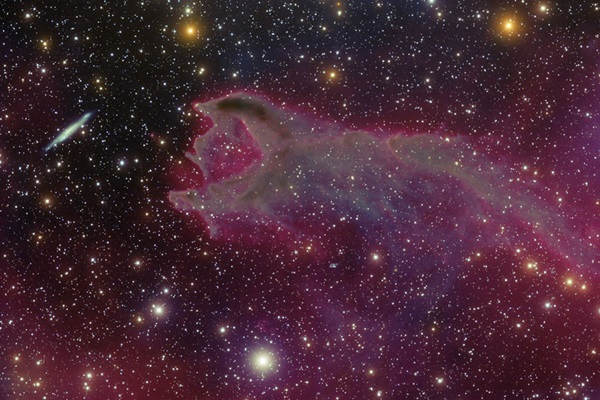Key Takeaways:
Travis Rector of the National Optical Astronomy Observatory (NOAO) and Tim Abbott of the Cerro Tololo Inter-American Observatory (CTIO) imaged cometary globule CG4 using the 157-inch (4 meter) Victor M. Blanco Telescope at CTIO about 50 miles (80 kilometers) east of La Serna, Chile. The pair used a 64-megapixel Mosaic imaging camera and blue, green, near-infrared, and hydrogen-alpha filters to expose the image.
A cometary globule is a glob of gas and dust shaped like a comet but lacking the solid, icy nucleus of an actual comet. Such nebulae are small, isolated star-forming regions within the Milky Way. The CG4 nebula contains enough gas and dust to form several stars about the size of the Sun.
CG4 lies about 1,300 light-years away in the constellation Puppis the Stern. The nebula’s head is about 1.5 light-years in diameter, and its tail is some 8 light-years long. Electrically charged hydrogen from nearby stars causes CG4’s faint red glow. Star formation depletes gas and dust from the nebula and causes its head to appear sunken.
This is the 1,000th image in the NOAO online image gallery.










